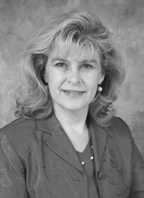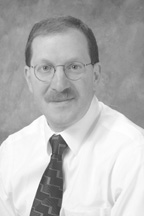Having performed 3000 transplants over the past 20 years, the bone marrow/peripheral stem cell transplant program at UNMC and The Nebraska Medical Center is firmly established among the elite programs in the country.
“In terms of transplants performed, we have done more transplants than anyone for non-Hodgkin’s lymphoma,” said Julie Vose, M.D., professor and chief of the section of hematology/oncology, UNMC department of internal medicine. “Overall, for total transplants performed for all types of cancer, we probably rank among the top five centers.
 |  |
Julie Vose, M.D. | Phil Bierman, M.D. |
“Even though more transplant centers exist than ever before, we continue to attract patients from throughout the U.S. and around the world. I think that speaks volumes for our program.”
Of the first 3000 transplants, 1,205 (40.1 percent) have been for non-Hodgkin’s lymphoma. The breakdown after that is: 528 (17.8 percent), leukemia; 467 (15.5 percent), Hodgkin’s disease; 393 (13.1 percent), breast cancer; 174 (5.8 percent), other malignancies; 120 (4 percent), multiple myeloma; 65 (2.1 percent), other non-malignancies; and 48 (1.6 percent), myelodysplastic syndromes.
The medical center’s transplant team has performed transplants on patients from all 50 states, the District of Columbia and 12 foreign countries. Patients from Nebraska represent 34 percent of the transplant volume, followed by Iowa patients with 10 percent, Kansas patients with 6 percent, and Missouri and Colorado patients with 5 percent.
“We’ve been doing this a long time, have extensive experience and have published results,” said Phil Bierman, M.D., an oncologist for The Nebraska Medical Center and associate professor in the UNMC internal medicine department. “We’re a whole lot better now than we were the first year. Then, about a third of the patients died before they left the hospital.
“When we first started doing transplants, we just wanted to get people through the transplant. Now, it’s very rare for a patient to die from complications of the transplant. The growth factor drugs have made a huge difference.”
In the early days of the transplant program, patients were typically in the hospital for a couple months following a transplant, Dr. Vose said. Now, patients stay in the Lied Transplant Center instead of the hospital and usually go home a couple weeks after their transplant.
Dr. Bierman cited several factors for the success of the program. “We have the best nurses who do a great job caring for the patients. They are highly experienced,” he said. “We have a team approach. Anybody can do a transplant when things go well. But when patients have problems, that’s when you need experience and expertise.
“We have a great team of specialists — pulmonologists, gastroenterologists, infectious disease specialists — and great help from the laboratory, radiology, pathology and others. They are responsive, helpful and interested in our problems. If we didn’t have those people, we couldn’t do this.
“We’re only the tip of the iceberg. The Lied Transplant Center certainly makes UNMC a nicer place to do transplants. It’s a beautiful place. It allows us to provide cooperative care and patients love that. They like the comfortable setting and the easy access, especially if they’re from out of town. But mostly they like the people here.”
Dr. Bierman said he is optimistic that the program will continue to improve thanks to the discovery of new drugs, such as combining chemotherapy with antibodies to kill lymphoma cells, enhancing the immune system after therapy, vaccines, and the use of antisense molecules.